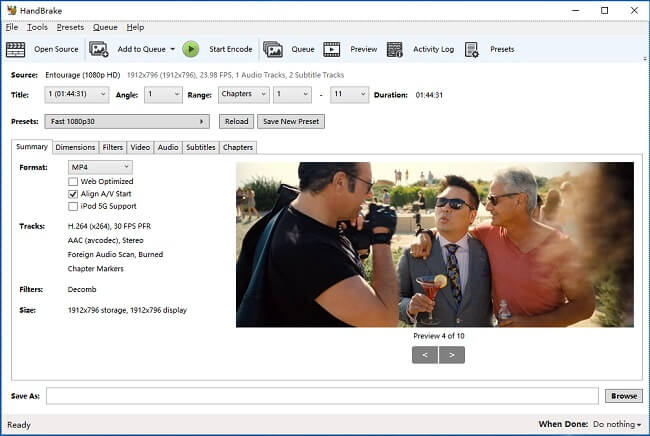

We’re not going to even bother with any of these though. You can adjust your video and audio quality, add subtitles, and much more. Source displays basic information about your source file: titles in the file, angles, and dropdown buttons that will allow you to convert your file by chapter, time (seconds), or frames.įinally, there are your Output settings.

Destination, of course, allows you to choose where your converted file is saved and what it is called. No GUIs, lightning fast, this is just one of those things that the command line does better.Along the top row are six buttons where you can manipulate essential functions, such as opening your source file, adding a job to the queue, and a simple “Start” button, which says it all.īelow these buttons are your Source and Destination features. Now, I simply invoke rip_m4a_from_mp4 somevideofile.mp4 and I am left with an audio only version with the same filename, ending in m4a instead. Since I always intend to rip aac audio data out of an mp4 container/video, I wrote a quick little script to do it. I can't believe something like this was so difficult and hidden for so long. Coupled with disabling video via -vn leaves you with a lone audio track inside an mp4 container. ffmpeg will write the audio data out as various supported codecs, but specifying copy leads a bit-for-bit exact copy of the stream. acodec copy: Copy the audio source as-is, here's where all the magic is.

vn: Do not record (do not consider) video data. So, after installing ffmpeg, and having the ffmpeg accessible at the command line, I ran a command like this: ffmpeg -i videofile.mp4 -vn -acodec copy audiotrack.m4a Between Rudix, Homebrew, MacPorts, and Fink (does anyone even use fink anymore?), third party software is a snap to install. I absolutely wanted an as-is version of the audio extracted from the video.įirst off, it's pretty easy to install things like ffmpeg, mplayer, things built off them, and similar open source packages nowadays. I will expand on the question a bit and spell out the fact that I was already working with mp4 contained video/audio, so MP4 Video (.m4v) and AAC Audio (.m4a). I finally found the exact combination I needed, and I found it in ffmpeg.


 0 kommentar(er)
0 kommentar(er)
